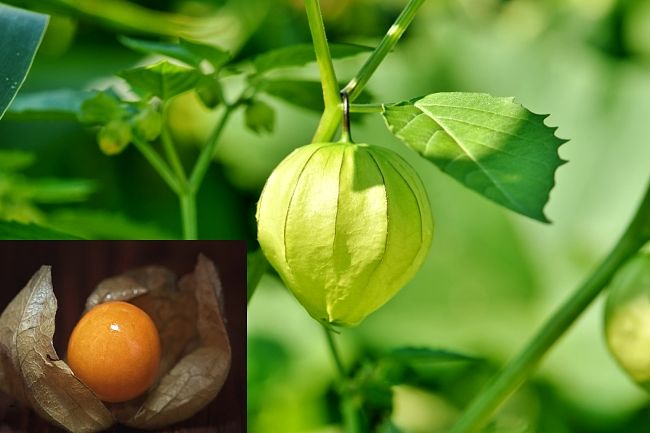Planting and Growing Guide for Cape Gooseberry (Physalis peruviana)
Description
The Cape Gooseberry grows as a small perennial bush up to about 1 m (3 feet) tall and 1.5 m (4 feet) wide. It is a native plant in Peru and Chile. Cape Gooseberry produces small yellow fruits contained within a brown papery envelope. It is perennial. The Cape Gooseberry belongs in the genus Physalis, with the related tomatillo and ground cherry.
The Cape Gooseberry is relatively easy to grow, but take care as birds can spread the seed and it can readily spread around the garden and into neighbouring properties by birds which love the fruit. The Cape Gooseberry berries are the size of a large marble. They are very tasty and aromatic, but they contain a myriad of tiny seeds. The fruit can be eaten raw, added to salads and bakes, or the fruit can be stewed or made into a jam. They can be added to salads, desserts and cooked dishes. Dried Cape Gooseberry berries are known as 'Inca Berries'.
Cape Gooseberry will grow in virtually all soils that do not get water-logged. They do best in sand or light well-drained loam. Cape Gooseberries can be grown all year round in frost free areas generally producing superior fruit during winter and spring. They need regular watering during hot dry summers. They have shallow roots and so need a good layer of mulch. This is keep the soil moist and cool. They can be grown as an annual, particular in areas with winter frosts. However they are perennial plants that can be pruned back after the fruit has been harvested. Will a small addition of well-rotted manure or compost they will ready for new growth and cropping in Spring. However. fruit tends be smaller in the second and third years of growth. They should be replaced after three years, or when fruit yield declines.
Planting Guide
Seed Depth: Plant seed directly into the ground where you want them to become established as a perennial . Plant seeds about 5 mm (1/4 inch) deep.
Space between plants: Space plants about 50-60 cm (24 inches) apart.
Harvest Time: You can harvest the fruit after 14-16 weeks and then continuously as they flower and produce more berries over several months.
Hints:
- Grows best in full sun or half shade
- Cape Gooseberry is frost tender, especially when small
- Steady and regular watering is required when fruit are developing, but avoid water-logging
- Do not apply fertiliser when flowering. Cape Gooseberry thrives with minimal application. Adding fertiliser to mature plants tends to produce excessive leaf growth, inhibiting flowering and fruiting
- Watch out for pests and diseases
- Pruning is not required until after the first harvest
- Cover the soil around the plants with compost to help keep the soil moist

Disclaimer: The PlantWhatWhen vegetable planting guide is only designed for use as a very general reference for home gardening purposes. It is not to be used for farming, markets or commercial activities of any kind whatsoever. We take absolutely no responsibility for the accuracy and adequacy of the information provided on this site. We recommend that you consider your local climate, weather patterns and conditions when deciding what and when to plant in your home garden. It's entirely your own decision. Happy Gardening and Best Wishes!